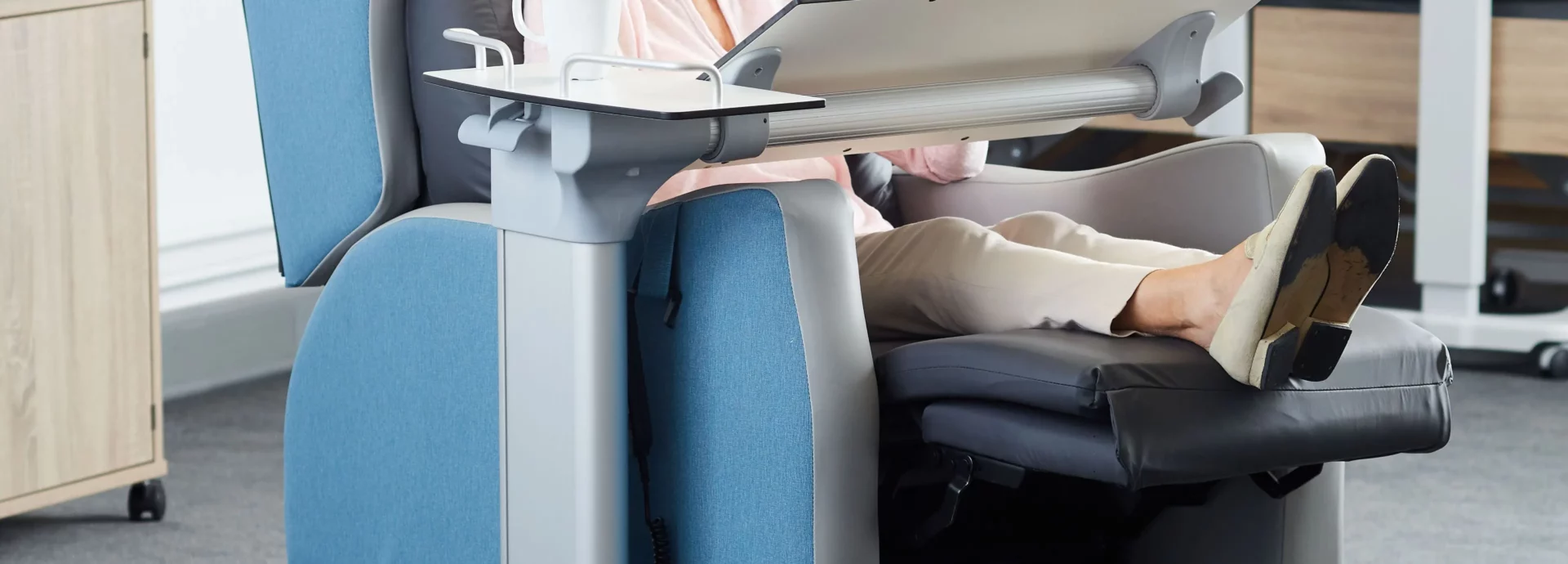Vapour Permeable Materials vs. Vinyl
Posted on 1 June 2017 By Aaron Stretton

In This Article
Anyone who works in procurement and tissue viability will be aware of the various discussions regarding the benefits of vapour…
Anyone who works in procurement and tissue viability will be aware of the various discussions regarding the benefits of vapour permeable fabrics. Particularly when it comes to mattresses, vapour permeable material is becoming more and more popular in palliative care environments and critical care units in hospitals. That being said, vinyl is still a pretty standard, reliable covering on many mattresses, and this too has its own benefits. But which one is better?
Flexibility
You’ll see a lot of vinyl (sometimes referred to as leatherette) in any hospital. Whether it’s covering a chair or a mattress, vinyl has been used on equipment for many years now, but that does not necessarily mean that it’s good for everything. One area where vinyl falls short in flexibility, simply because it isn’t a woven material. This means that there is not much give in a mattress or cushion covered in this material, which can make the surface feel stiffer and more restrictive.
On the other hand, vapour permeable fabrics are usually more flexible. Because they’re woven, vapour permeable materials have more give and can adjust to the user’s body shape and weight distribution more comfortably. This means that there is less pressure exerts upon the user’s body because of the yielding fabric, giving a more comfortable experience.
Breathability
Again, the non-woven nature of vinyl makes it pretty poor for breathability. This also means that vinyl covered surfaces get a lot warmer than others, which can be detrimental for skin protection in pressure care. However, vinyl was designed and used to be water-tight, which obviously means that it will have no breathability due to the completely sealed structure of the fabric.
Conversely, vapour permeable fabrics are just that — vapour permeable. This means that they are porous, and can allow air to flow through the fabric much better than vinyl can. This circulation means that it takes a lot longer for the mattress or cushion to reach maximum body heat reflection, therefore keeping the user cooler for longer.
Hygiene
Whilst vapour permeable materials are great for flexibility and breathability, they’re a bit more fussy to clean. Dartex, one of the leading suppliers of vapour permeable materials, recommends that you remove any debris from the material first, then wipe down the surface with approved cleaning products, then rinse it with clean water and dry it thoroughly. These materials are completely waterproof to prevent any fluid ingress.
Vinyl is more straightforward than this. Because it’s completely non-permeable, it can simply be wiped down with the appropriate cleaning products to ensure that any stains, debris, or bacteria are removed. This low maintenance approach helps to save time on mattress decontamination.
Pressure Care
One of the biggest challenges faced in this sector is pressure care. It costs the NHS an unthinkable amount of money every single year to combat and treat pressure ulcers. Unfortunately, low quality healthcare equipment can actually have a negative effect on the likelihood on developing pressure injuries whilst in hospital or another care facility. Vinyl can be a contributing factor to a patient’s susceptibility of pressure injuries. The lack of breathability and flexibility means that pressure can build up much faster on bonier areas of the body, and if the individual perspires, they’re more likely to have skin degradation.
Vapour permeable materials are more pressure care-friendly. The flexibility of the fabric helps to redistribute pressure, and therefore does not exert any additional pressure on susceptible areas. Vapour permeable materials also have the added bonus of air flow and breathability, which decreases the chance of sweating, therefore helping to preserve the integrity of the skin.
Summary
Overall, there are bonuses for both materials. With vinyls being more durable, easier to clean, and coming in a wider range of colours, they do tend to be a more popular choice than vapour permeable materials.
That being said, vapour permeable materials offer better comfort and breathability, which is ideal for reducing the chances of pressure injuries. We’d recommend using vinyl on the outside of chairs for durability, and using vapour permeable fabrics on user contact surfaces for better comfort and protection from pressure ulcers.
Speak to The Experts
Need assistance with product enquiries, general inquiries, or product support? Our Phonelines are open 9am - 5pm Monday to Friday
0113 519 0319
Or, fill out the form for a call back.
